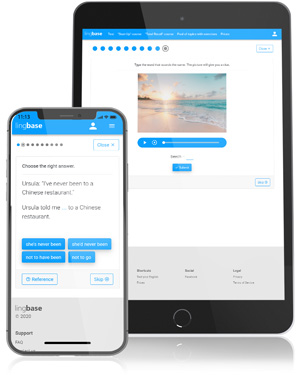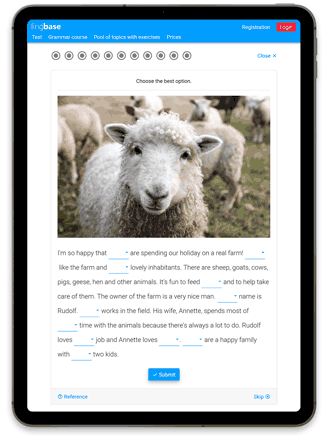English grammar online with Lingbase
Practice is the most effective way to learn grammar. Our online exercises will help you understand and memorise the rules once and for all.

What's nice about Lingbase?
If you know which topic you need to learn or revise, go to the pool of topics. If you want to study grammar step-by-step, choose a course.
Learning by practising
6 types of exercises
Modern vocabulary
Easy to use
On desktop, tablet and mobile
Starting from $2.39 per month
A pool of topics with exercises and two courses
If you know which topic you need to learn or revise, go to the pool of topics. If you want to study grammar step-by-step, choose a course.
Pool of topics with exercises
A list of grammar topics with simple explanations and a range of special exercises on each topic.
Choose a topic"Start-Up" course
An essential course for beginners. Learn and practise English grammar step-by-step with targeted exercises.
"Total Recall" course
Grammar, pronunciation and listening comprehension — all-in-one practical intermediate course.
Hundreds of exercises, thousands of tasks
That’s how many items we have at the moment. And many more are coming!
Exercises
Tasks
Questions
Test your grammar
Are you on good terms with verbs and pronouns? Find out how well you know the basics!

Can Lingbase help you learn?
Yes, if
-
you are a self-learner, as an online grammar course
-
you study English with a teacher, as an intense, focused grammar practice
-
you are only starting to learn English or already making progress